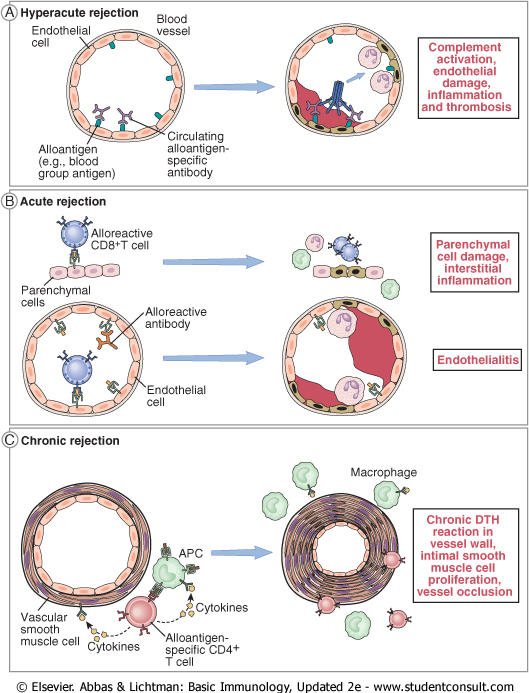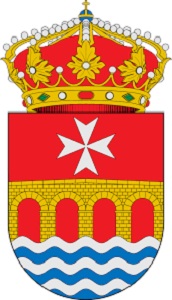briefing (2) from the centre for studies on inclusive education (csie) july 2005 ending segregation and developing inclusive education –
BRIEFING (2) FROM THE CENTRE FOR STUDIES ON INCLUSIVE EDUCATION (CSIE)
July 2005
Ending segregation and developing inclusive education
– A WORLDWIDE MOVEMENT
‘The rights of students with disabilities to be educated in their
local mainstream school is becoming more and more accepted in most
countries and many reforms are being put in place to achieve this
goal. Further, there is no reason to segregate disabled students in
public education systems. Instead education systems need to be
reconsidered to meet the needs of all students.’ (Organisation for
Economic Co-operation and Development, OECD, 1999)
Examples of inclusive education from countries across the world are
available on the websites of the following organisations:
1. Centre for Special Needs and Studies in Inclusive Education (www.ied.edu.hk/csnsie)
Hong Kong, an organisation committed to implementing inclusive
education through local applied research and case studies on inclusive
practices. Includes the following papers:
*
‘Integration in Hong Kong: where are we now and what do we need to
do? A review of the Hong Kong Government’s Pilot Project’ (1999).
A discussion paper on the Government’s 2 year Pilot Project on
Integration set up in 1997, by the end of which 48 pupils were
included in 7 primary and 2 secondary schools; includes
information based on interviews with students.
*
‘The Education of Children with Special Needs: Barriers and
Opportunities in Central and Eastern Europe’ (www.ied.edu.hk/csnsie/info/res2.pdf),
by Mel Ainscow and Memmenasha Haile-Giorgis, published by UNICEF.
Includes a discussion of barriers and possible ways forward, and
discussion of progress towards inclusion in the Czech Republic,
Hungary, Slovakia, Poland, Slovenia, Romania, Latvia and
Lithuania.
2. Disability World (www.disabilityworld.org), a web-zine dedicated to
the exchange of information and research about the international
independent living movement of people with disabilities. Articles on
inclusive education around the world include:
*
‘The Process of Inclusion in Brazil and in Latin America’ (2000) (www.disabilityworld.org/March2000/English/VamprepaperINCLUSIONENG.htm),
by Maria Amelia Vampre Xavier
*
‘UNESCO supports an inclusion development project in Nicaraguan
schools’ (www.disabilityworld.org/06-08_02/children/nicaragua.shtml)
*
‘Russia: Young disabled activists tackle attitudes in mainstream
schools’ (www.disabilityworld.org/12-02_05/children/russia.shtml),
by Denise Roza+
3. International Disability and Development Consortium (IDDC) (www.iddc.org.uk/),
a group of 16 international NGOs supporting inclusive disability and
development work in over 100 countries globally. Examples of inclusive
education developments include:
*
‘Disability development in education in the urban community: A
study in education for children with disability’ (2001) (www.iddc.org.uk/dis_dev/strategies/research_berdo.pdf),
by Md. Saidul Huq of BERDO (Blind Education and Rehabilitation
Development Organisation), which looks at how to include disabled
children in mainstream schooling in Bangladesh. Includes case
study of a visually impaired girl.
*
‘A critical review of the literature relating to the education of
disabled children in developing countries’ (www.iddc.org.uk/dis_dev/strategies/critical_review.doc)
(1994), by Sue Stubbs. An overview of issues arising when
westerners begin to research disability in ‘developing’ countries,
with a particular focus on Africa.
4. Enabling Education Network (EENET) (www.eenet.org.uk), an
information-sharing network aimed at supporting and promoting the
inclusion of marginalised groups in education worldwide. The website
contains information on EENET’s action learning project, funded by the
UK Department for International Development, documenting experiences
of promoting inclusive education in communities in Zambia and Tanzania
(www.eenet.org.uk/action/action.shtml) and extensive information on
inclusion of deaf learners (www.eenet.org.uk/deaf/deafness.shtml).
Examples of inclusion across the world include:
*
‘Researching our Experience’ (2003) (www.eenet.org.uk/action/rsrching_experience.pdf).
A collection of writings by teachers from schools in Zambia
including a chapter on inclusion of disabled students in
mainstream education, with case studies. Examples relate to
learning difficulties; communication between hearing and hearing
impaired children; physical disability.
*
‘Learning from Difference: Understanding community initiatives to
improve access to education’ (2003) (www.eenet.org.uk/action/learning_from_diff_yes.pdf).
Accounts of inclusive education at 19 primary schools in Tanzania
and Zambia. Primary schools in Tanzania include a residential
special school for physically disabled children offering its
resources and expertise to the inclusion initiatives, a primary
school with a special unit, and a primary school resource base for
itinerant teachers of visually impaired children. In Zambia, two
schools have special units attached, one for deaf children and the
other for children with learning difficulties.
*
‘Including deaf learners in Zambia’ (www.eenet.org.uk/deaf/inclusion_deaf_learners.shtml).
*
‘Case Study: Papua New Guinea – The provision for children with
hearing impairment and deafness in an “inclusive” system’ (www.eenet.org.uk/deaf/incdeafrep/pngsian.shtml),
by Sian Tesni.
*
‘Inclusion and Deafness – Families as essential stakeholders’ (www.eenet.org.uk/deaf/incdeafrep/elina.shtml),
by Elina Lehtomaki.
*
‘International experience in including children with disabilities
in ordinary schools’ (www.eenet.org.uk/theory_practice/internat_exp.shtml),
by Prof. Peter Mittler, Manchester, England. A summary of the
experiences of implementation of inclusive policies, focusing on
countries in the Middle East and North Africa and other French or
Arabic speaking countries. Draws heavily on UNESCO documents.
Countries included are Uganda, Lesotho, Vietnam, Lao, Jordan,
Palestine, Morocco, Egypt and Yemen. Also looks at obstacles to
inclusion and how these might be overcome, with particular
reference to Brazil, India and South Africa. Includes a useful
summary of UNESCO resources.
*
‘Inclusion and deafness’ (www.eenet.org.uk/deaf/incdeafrep/repindex.shtml).
Report of a seminar at the University of Manchester in 1999,
including papers on Uganda, China, Papua New Guinea and
Afghanistan.
*
‘Challenging the exclusion of blind students in Rwanda’ (www.eenet.org.uk/newsletters/news7/page4.shtml),
by Evariste Karangwa, reporting on the inclusion of visually
impaired and blind students in their local secondary school.
*
‘Including deafblind children’ (www.eenet.org.uk/newsletters/news8/page13.shtml),
by Sumitra Mishra and Ben Simms, on the involvement of Sense
International in Brazil, Romania, India and Bolivia.
*
‘Developing learning and participation in countries of the South –
the role of an Index for Inclusion’ (2001, revised 2005), by Tony
Booth and Kristine Black-Hawkins (soon to be available on EENET’s
website, but until then available via email at
[email protected]). The Index for Inclusion, a tool to support
inclusive development in schools written by Tony Booth and Mel
Ainscow and published by the Centre for Studies on Inclusive
Education (CSIE), has been used in many countries worldwide. This
paper discusses its use in India (Mumbai and Chennai), Brazil and
South Africa.
There are other articles on experiences in the UK, Macedonia,
Ethiopia, South Asia, India, Australia and Lesotho, and a number of
useful, short articles in EENET’s latest newsletter, June 2005 (www.eenet.org.uk/newsletters/news9/eenet_news9.pdf).
5. Inclusion International (www.inclusion-international.org/en/), a
global federation of family-based organisations advocating for the
human rights of people with intellectual disabilities and their
families. One of the priority areas is inclusive education. Key
articles include:
*
‘The right to education for persons with disabilities: Towards
inclusion – conceptual paper’ (2004) (www.inclusion-international.org/site_uploads/1113910819151774467.pdf).
Contains some examples of recent and current initiatives in
Brazil, Bosnia & Herzegovina, South Africa and Uganda, as well as
a discussion of the major issues and proposals for a practical
framework for action.
6. UNESCO (www.unesco.org). Inclusive education is one of UNESCO’s
‘key concepts’, and the website contains a wealth of examples of
inclusive education worldwide, including the following:
*
‘Including the excluded: Meeting diversity in education – Example
from Romania’ (http://unesdoc.unesco.org/images/0012/001231/123165eo.pdf)
(children with HIV, children with disabilities, Roma children).
*
‘Including the excluded: Meeting diversity in education – Example
from Uganda’ (http://unesdoc.unesco.org/images/0012/001226/122613eo.pdf)
(children affected by armed conflict, children with special
educational needs)
*
‘Students with disabilities in regular schools: Welcoming schools’
(1999) (http://unesdoc.unesco.org/images/0011/001184/118455eo.pdf).
Examples from Ghana, Palestine, Peru (physical disability), Uganda
(visual impairments), South Africa (hearing impairment), Mongolia,
Germany (Down’s syndrome, cerebral palsy), Hungary (hearing
impairment), Australia (Down’s syndrome), China (visual
impairment, blind), Portugal, India (visual impairment), Lesotho,
Chile (Down’s syndrome, motor impairment, special educational
needs), Canada (visual impairment and others).
*
‘Inclusion in Education: The Participation of Disabled Learners’
(2001) (http://portal.unesco.org/education/en/ev.php-URL_ID=28460&URL_DO=DO_TOPIC&URL_SECTION=201.html),
by James Lynch. A thematic analysis of country reports relating to
the Education for All 2000 assessment of progress, interspersed
with examples of instructive practice from across the world which
highlight barriers and how they might be overcome. Includes brief
examples from Italy, Switzerland, South Africa (deaf child),
Ireland, Vietnam (physical disabilities), Madagascar, China
(visual impairments), India, Romania, Uganda, Philippines (hearing
impaired and blind), South Africa, Ireland, Lesotho, Madagascar,
Portugal, Brazil, Kenya (blind and visually impaired), Mexico.
Detailed individual country reports are available at
http://www2.unesco.org/wef/countryreports/home.html.
*
‘First steps – stories on inclusion in early childhood education’
(1997) (http://unesdoc.unesco.org/images/0011/001102/110238eo.pdf).
Includes examples from Australia (ethnicity issues and
disabilities), Chile, Denmark (severe disabilities), France,
Greece (visually impaired), Guyana, India, Lao (children with
disabilities in mainstream but deaf and blind in separate school),
Lebanon, Mauritius, Portugal (socially disadvantaged children),
South Africa, US.
*
‘Making it happen: Examples of good practice in special needs
education and community-based programmes’ (http://unesdoc.unesco.org/images/0009/000968/096884ev.pdf).
Examples from Austria, China (mild learning difficulties), Ghana,
Guyana, India, Jamaica, Jordan (deaf, learning difficulties), Holy
Land (institute for the deaf role in community based
rehabilitation), Netherlands (children with Down’s syndrome),
Norway, and a separate chapter on international initiatives for
deaf education in developing countries.
8. UNICEF (www.unicef.org). Examples of inclusive education from
around the world include:
*
‘Disabled children join mainstream’ (www.unicef.org/bhutan/disable.htm)
– Bhutan
*
‘Government of India announces plan to make education
disabled-friendly by 2020’ (www.unicef.org/india/media_610.htm)
*
‘Childhood under threat’ at
www.unicef.org/uzbekistan/protection_1696.html) – the
establishment of a Resource Centre on Inclusive Education in
Uzbekistan
*
‘External Evaluation of the Project Special Classrooms for
Children with Disabilities in Bosnia and Herzegovina 1997-2000’ (www.unicef.org/evaldatabase/files/BHG_2000_007.pdf)
(2000), by Martyn Rouse et al.
*
Education Update vol. 2, issue 4, October 1999 (www.unicef.org/girlseducation/files/vol2disabileng.pdf)
is concerned children with disabilities and includes a number of
articles on inclusive developments across the world, including in
Greece (visually impaired); Brazil, Armenia, Cote d’Ivoire, China
(visually impaired) Jamaica.
9. World Bank (www.worldbank.org/disability)
*
‘Inclusive Education – Early Lessons Learned from Senegal’ (http://info.worldbank.org/etools/docs/voddocs/494/967/senegal.doc)
(2003), by Carlton Aslett-Rydberg. Reports on a study in Senegal
funded by the Nordic Development Fund as part of the Quality
Education for All Programme, led by the World Bank. Part of the
development of inclusive education in Senegal, looking at how to
build on existing resources within the country.
*
‘Disability and Education: Toward an Inclusive Approach’ (www.iadb.org/sds/doc/Rev2bEditedDisability%2DEducationPorter.pdf),
by Gordon Porter of the Inter-American Development Bank, working
paper. Includes a section on country experiences – looks at
successful inclusive education developments in Jamaica (slow
learners) and Brazil (mental disabilities), and includes a chapter
on the conditions for success. These two countries also feature in
‘Disability and Inclusive Education: A paper prepared for the
Inter-American Development Bank’, 2001, by Gordon L. Porter.
Available via Inclusion International website (www.inclusion-international.org/site_uploads/111900800114467256.pdf).
*
‘Inclusive Education: An EFA Strategy for All Children’ (http://www1.worldbank.org/education/pdf/InclusiveEdu_efa_strategy_for_children.pdf)
(2004), by Susan Peters of Michigan State University. Includes
‘best practice’ examples from the US, Canada, Europe and other
OECD countries and a chapter on lessons that can be learned from
experiences in countries of the South (particularly in relation to
physical impairments, blindness, deafness and cognitive
impairments). Also contains a useful section on sources for
information on disability, inclusive education and human rights.
The Centre for Studies on Inclusive Education (CSIE) was set up in
1982 to promote the education of disabled and non-disabled children
together in mainstream schools and to end the practice of educating
disabled children separately in ‘special’ schools.
CSIE, NEW REDLAND, FRENCHAY CAMPUS, COLDHARBOUR LANE, BRISTOL BS16
1QU, UK
TEL: +44 (0)117 328 4007. EMAIL: LINDA SHAW, CO-DIRECTOR AT
[email protected].
4
 DIVERSITY MONITORING IT IS IMPORTANT TO US THAT EVERYONE
DIVERSITY MONITORING IT IS IMPORTANT TO US THAT EVERYONE IES RAMÓN MENÉNDEZ PIDAL LENGUA CASTELLANA Y LITERATURA
IES RAMÓN MENÉNDEZ PIDAL LENGUA CASTELLANA Y LITERATURA  OPSHDMCD42906 PROGRAMA DE PEQUEÑOS SUBSIDIOS EN ENFERMEDADES TROPICALES INFORMES
OPSHDMCD42906 PROGRAMA DE PEQUEÑOS SUBSIDIOS EN ENFERMEDADES TROPICALES INFORMES DETALJERADE LÄRANDEMÅL DSM 11 DETALJERADE LÄRANDEMÅL DSM 11
DETALJERADE LÄRANDEMÅL DSM 11 DETALJERADE LÄRANDEMÅL DSM 11 L OGBOOK PROGRAM STUDI PENDIDIKAN DOKTER FAKULTAS KEDOKTERAN DAN
L OGBOOK PROGRAM STUDI PENDIDIKAN DOKTER FAKULTAS KEDOKTERAN DAN EL ÚLTIMO AUTO UNIÓN TYPE D “FLECHA DE PLATA”
EL ÚLTIMO AUTO UNIÓN TYPE D “FLECHA DE PLATA” STEM CELLS POINTS OF VIEW – 11 TO 14
STEM CELLS POINTS OF VIEW – 11 TO 14 CONCELLO DE PORTOMARÍN ANUNCIO VISTO O REGULAMENTO E BASES
CONCELLO DE PORTOMARÍN ANUNCIO VISTO O REGULAMENTO E BASES SANIDAD EUTANASIA AL PERRO DE LA AFECTADA POR ÉBOLA
SANIDAD EUTANASIA AL PERRO DE LA AFECTADA POR ÉBOLA